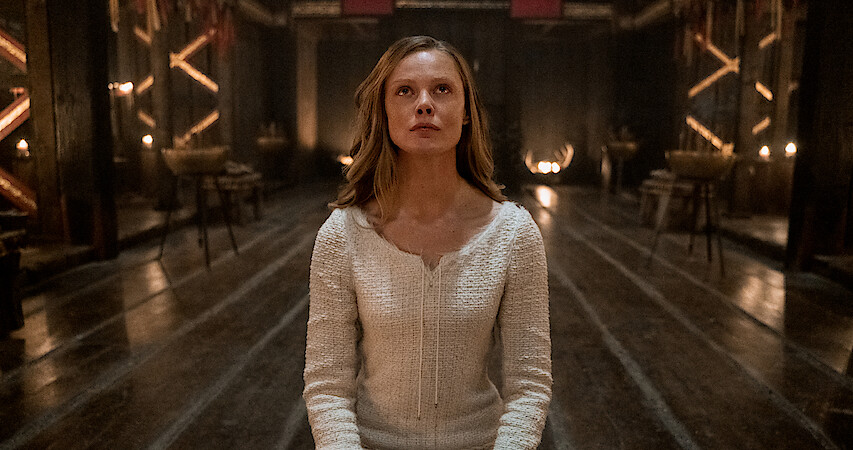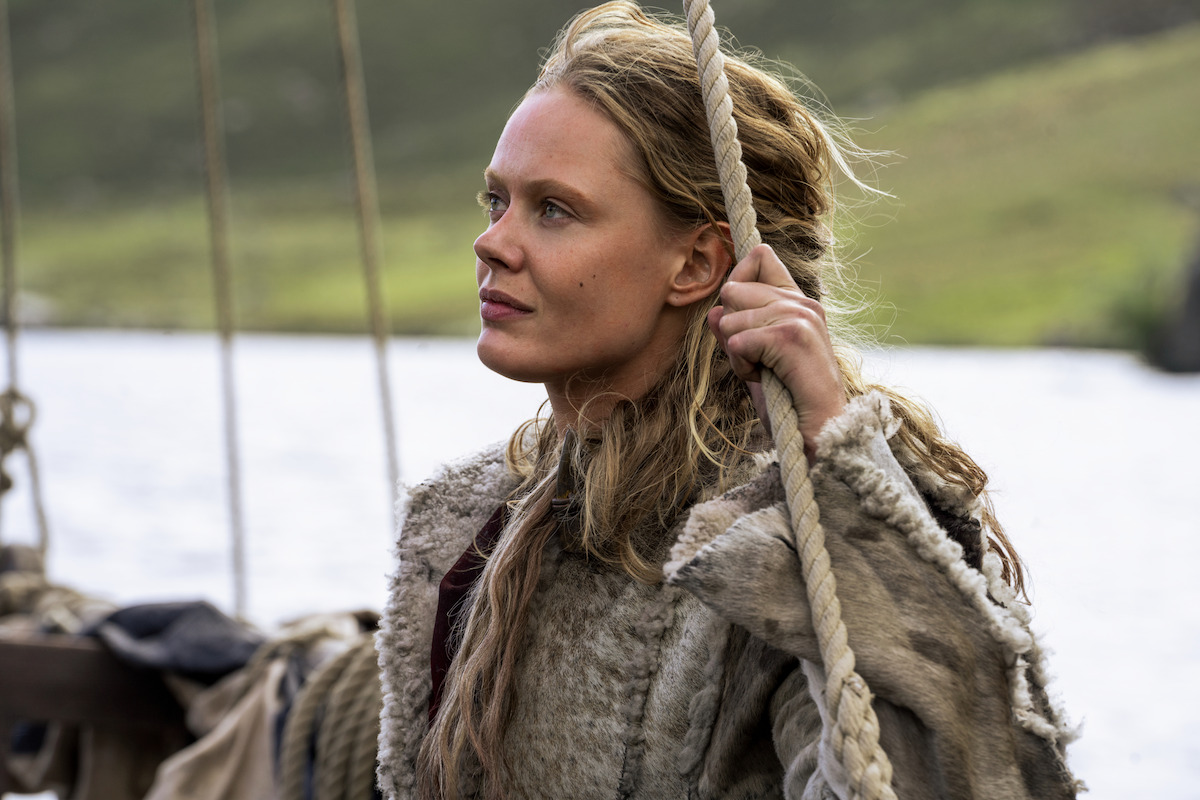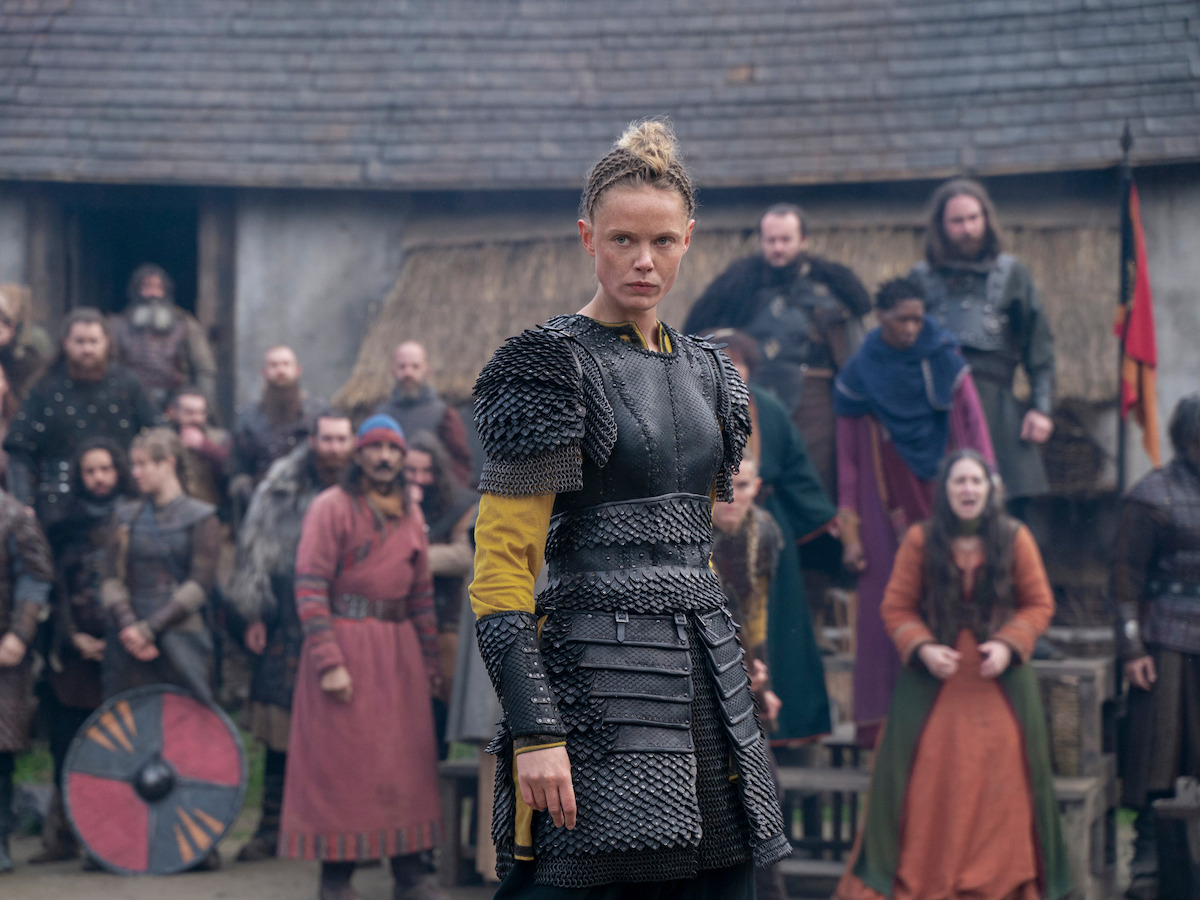





Powerful women, and their stories, have existed throughout history. Many learn in school about the authoritative and mighty queens of Egypt, Cleopatra and Nefertiti, and the main figures of the Renaissance era, Catherine de Medici and England’s Elizabeth I. But the image of warriors and armies tends to be solely male.
The historical record tells us differently, however; there’s Queen Boudicca of the Celtic Iceni tribe, who avenged a savage attack on her daughters, and in the year 60 reportedly massacred upwards of 70,000 Romans and pro-Roman Brits. Some of the fiercest pirates to rule the seas were women, like 19th-century China’s Ching Shih and 16th-century Ireland’s Grace O’Malley. It’s said that the Irish pirate queen commanded so much respect among her own people — and her English enemies — that she garnered an audience with Queen Elizabeth I of England.
Vikings: Valhalla, Netflix’s epic historical-fiction adventure series, features fierce women who demonstrate grit, wisdom and killer strategy — both on and off the battlefield. Women like Viking explorer Freydís Eiríksdóttir (played by Frida Gustavsson) and rulers Queen Emma of Normandy and the fictional Jarl Estrid Haakon (Caroline Henderson) play critical roles in the show. Throughout the series, women warriors fight alongside their male counterparts. But is that really what happened in Viking times?
The role of women in Viking culture is layered and nuanced. Many women were housewives, fulfilling the complex task of managing a home, while others were entrepreneurs, creating and selling crafts including textiles. In some ways, Viking women had a greater sense of agency over their European peers, such as the right to divorce their husbands and the right to own property, explains Elisabeth I. Ward, Ph.D., executive director of Los Altos History Museum, Norse literature scholar and Smithsonian Journeys guest lecturer. “On the public side (of society) we have evidence from the rune stones and archeology that women would be getting involved in politics, normally after their husbands had passed away, that they would step into that role that their husbands might have had, politically speaking,” she says.
That being the case, historical narratives depict a male hegemony within Viking culture, with men as the primary leaders and rights-holders in the society.

Viking lore names Freydís Eiríksdóttir, the half sister of famed explorer Leif Eriksson, as a female fighter. Around the year 1000, she sailed with husband Thorvard, explorer Thorfinn and his wife, Gudrid, to what Europeans later dubbed “the New World,” most likely what is now Newfoundland. In The Saga of Erik the Red, when Indigenious people of Vinland (as they called the region) attacked the newcomers, a pregnant Freydís stood her ground and wielded a sword even as the Viking men ran away. In this story, her character is described as brave and determined. In The Saga of the Greenlanders, Freydís is painted as an unhinged murderer. She and her husband travel with two Icelanders to what is now Newfoundland and eventually become estranged from their traveling companions, quarreling over housing, supplies and a ship. Freydís convinces her husband and followers to kill the Icelanders and, when no one raises a hand to the Icelander women, she dispatches them herself.
But what’s closest to the truth, and what does it tell us about women explorers and warriors in Viking society? Ward is more apt to believe Erik the Red’s version of Freydís — as a badass, sword-wielding explorer — over the devious traitor version.
The ending of the Greenlanders’ narrative seems as though it was written to fit an agenda. Ward says the ending is too didactic, as though some medieval cleric was trying to use Freydís' actions to teach a lesson about the ills of violence and selfishness — or as a way to squash a sense of female independence. It seems to say: Look what happened to the woman who had a sense of agency in her life — she ended up murdering a whole bunch of helpless women.
The typical picture of the Viking war chief is distinctly male; many picture a large, tall man with a beard, long plaited hair, furs and armor. But a discovery in Birka, Sweden, turns that story on its head.
In the late 1800s, archeologists examined tombs of fallen Viking warriors and hit upon one that was filled with a weapons arsenal. In the tomb were the remains of a person, a game board (warriors played games to sharpen strategy skills), armor-piercing arrows, a sword, a spear and a shield. It also contained the remains of two horses. To archeologists, it was clear this tomb was the resting place of a highly respected war chief, assumed to be male. So, when researchers tested the bones through genomic sequencing, they were surprised to find that this was the tomb of a woman warrior.

Ward explains that the uncertainty around the prevalence of women warriors stems from the lack of primary texts; the histories we study about the Vikings were written hundreds of years after the height of their age. Neil Price, distinguished professor of archeology at Uppsala University, echoes the sentiment. “The reality is a lot more complicated, and there really are no clear answers,” he tells Tudum.
While the lives of common people, especially women, were often left out of historical documents, women commanded a prominent place in Nordic legend. Pieces of Norse myth and literature also feature dynamic female characters, from the Valkyries, who guide dead warriors from the battlefield, to girls who lean on their intelligence and bravery to escape from trolls. Ward muses that the role models in these stories might have given confidence to young women throughout Scandinavian history to become fighters — just as today’s young women are stepping into the seats of government. “[There are] a lot of literary tropes in Scandinavian heritage that would give a modern Scandinavian woman a sense that it would not be unusual to be a prime minister — or there would be a lot of literary role models in the Viking literature,” she explains.
While the historical record, so far, suggests that men were more often chieftains and battle leaders in Viking times, women could — and did — rise to the ranks of queen, revered warrior and merchant.





